
Hex Mayflies
Hexagenia limbata
The famous nocturnal Hex hatch of the Midwest (and a few other lucky locations) stirs to the surface mythically large brown trout that only touch streamers for the rest of the year.


Ameletus velox (Brown Dun) Mayfly Nymph Pictures
This Ameletus has puzzled me since I found their exuviae four years ago. Using the key in Larvae and adults of Ameletus mayflies (Ephemeroptera: Ameletidae) from Alberta this appears to key to Ameletus velox. It also sort of matches the color pattern on abdominal segments 6-7 from their figure 20C, which their text mentions as another identifying characteristic. However, one characteristic ("incisor area of left mandible with second denticle much smaller than first") doesn't seem to match. Also, velox is reportedly among the largest Ameletus species, but not quite as large as this nymph. My best guess is still that it represents a bit of undocumented variation on velox.
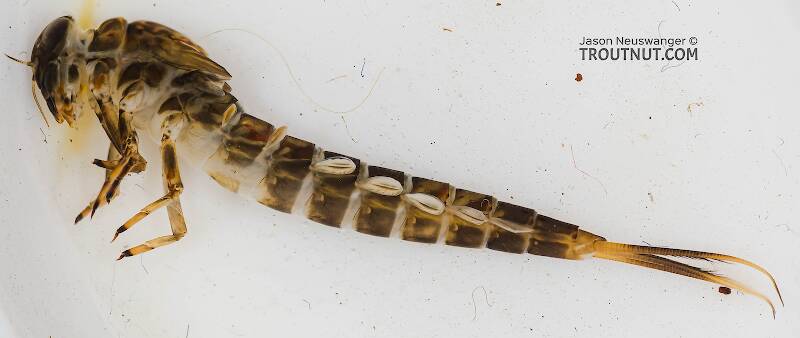
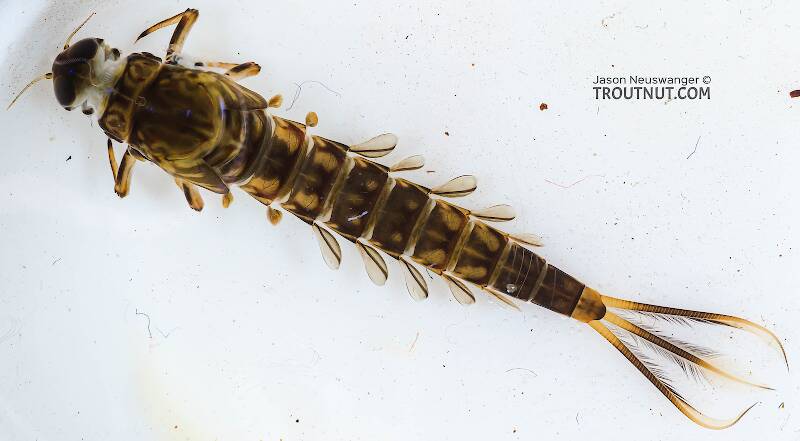
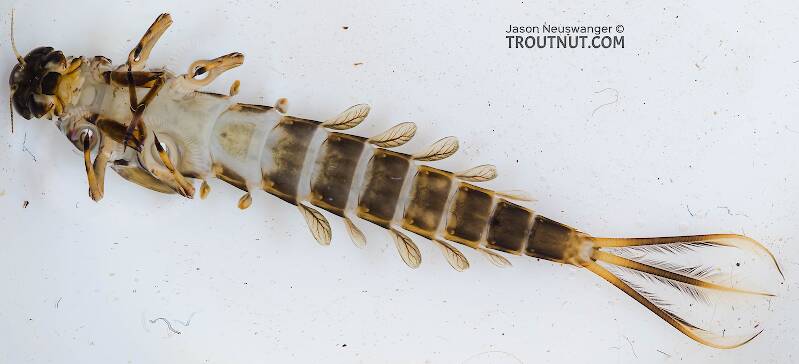
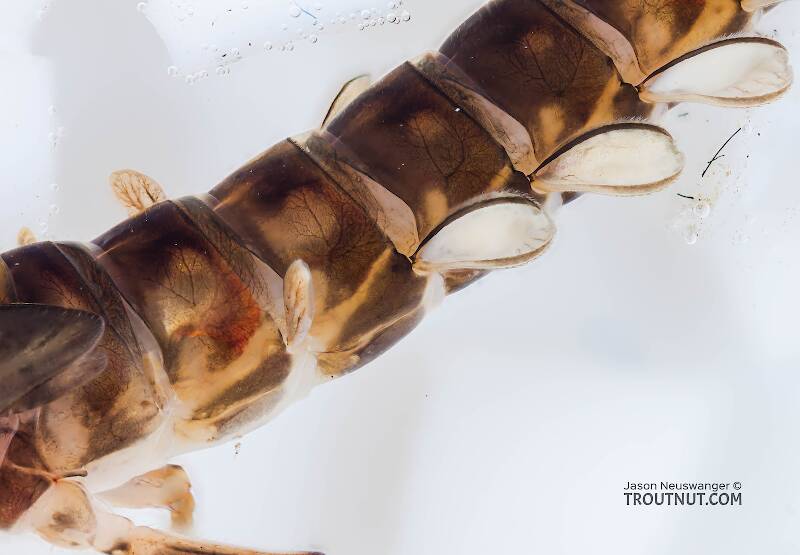
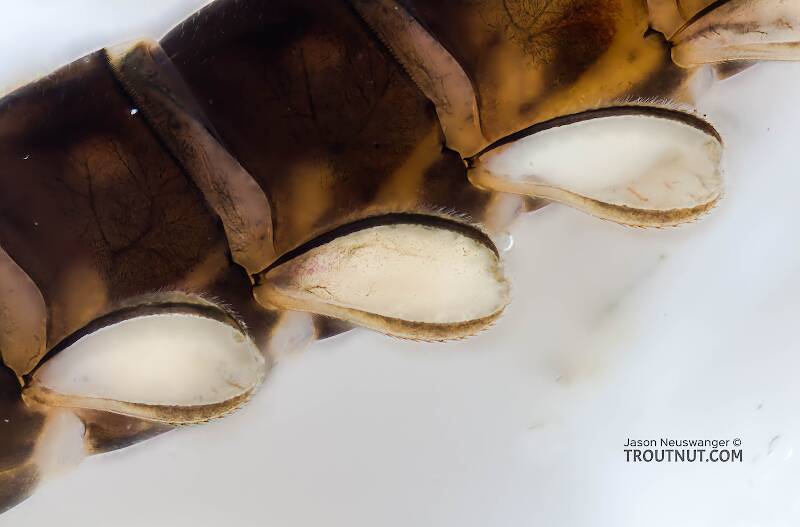
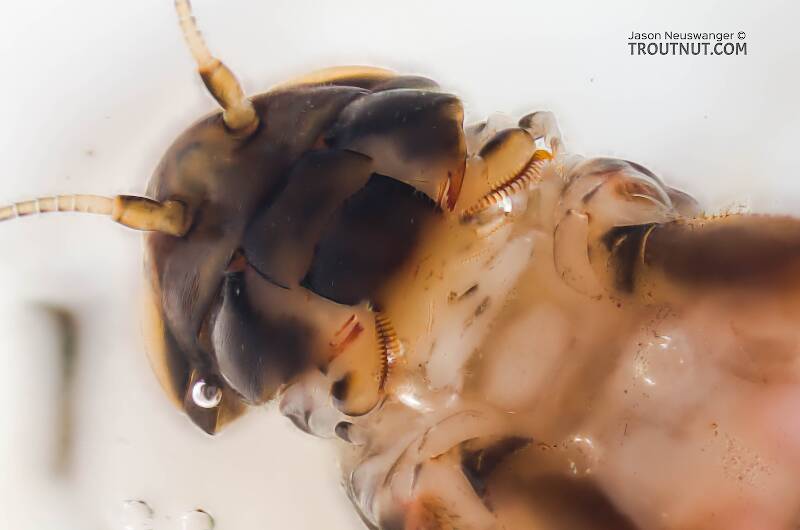
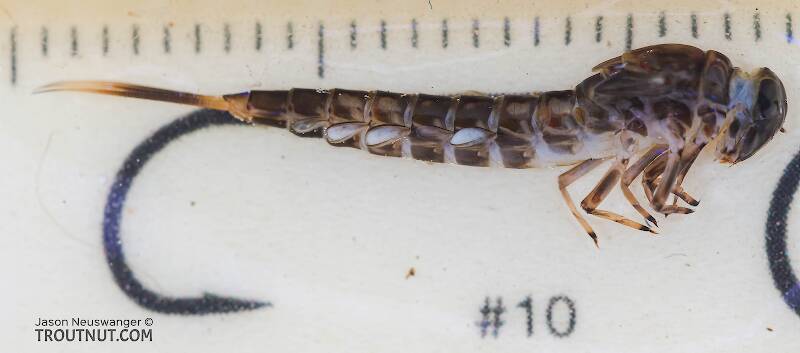
This mayfly was collected from Mystery Creek #199 in Washington on June 19th, 2023 and added to Troutnut.com by Troutnut on June 21st, 2023.
Start a Discussion of Nymph
References
- Baumann, Richard W. 1975. Revision of the Stonefly Family Nemouridae (plecoptera) : a Study Of The World Fauna At The Generic Level. Smithsonian Contributions to Zoology undef(211): 1-74.
Ameletus velox (Brown Dun) Mayfly Nymph Pictures
Collection details
Date: June 19th, 2023
Added to site: June 21st, 2023
Author: Troutnut

